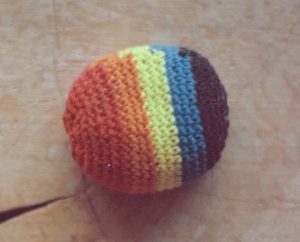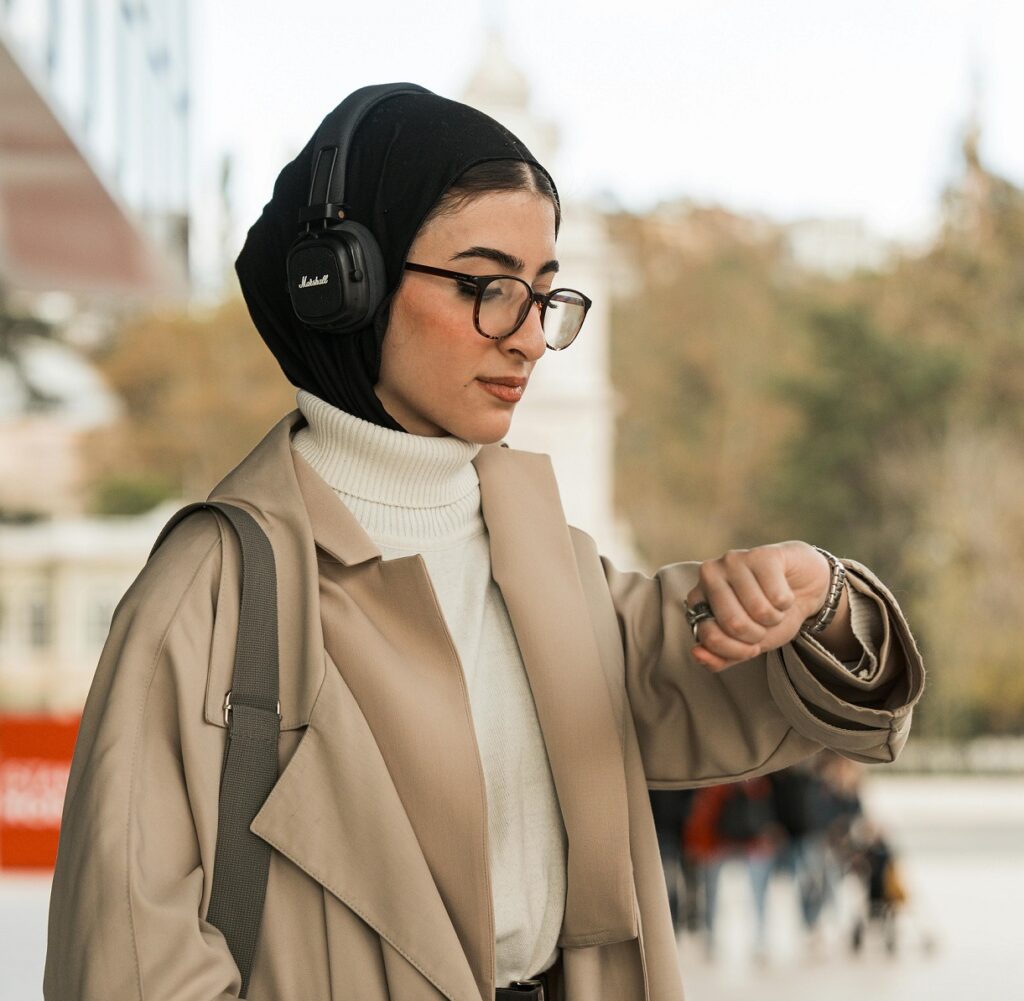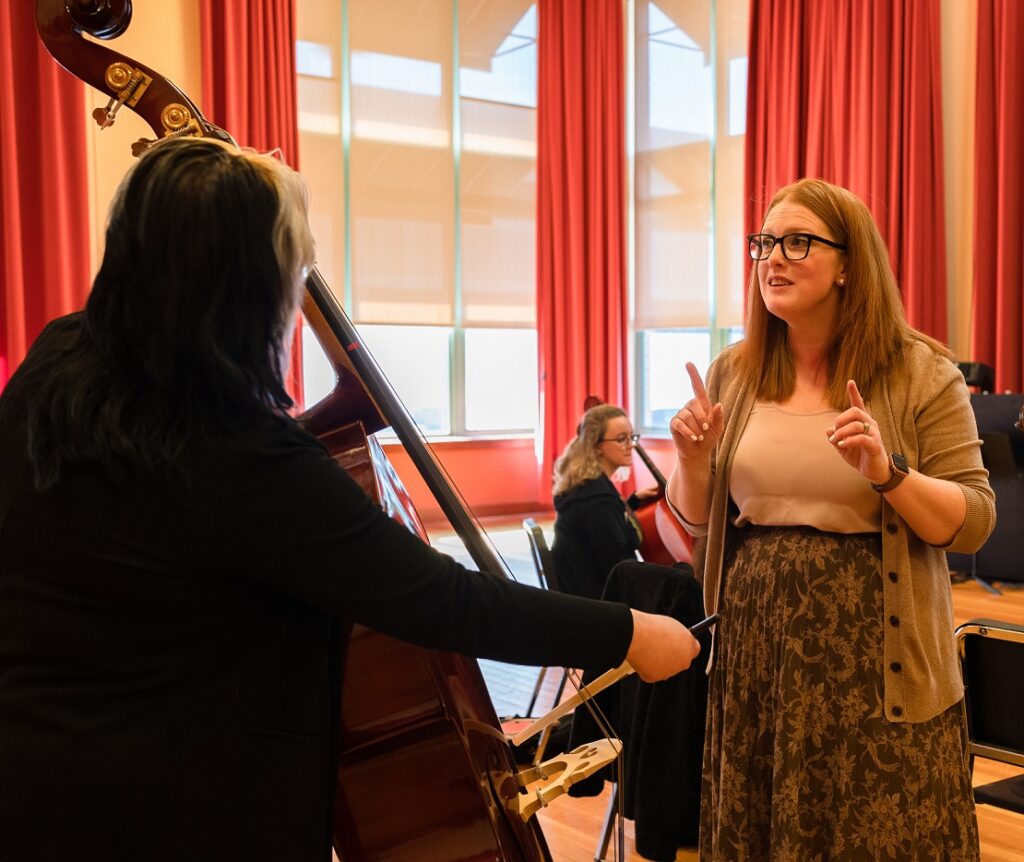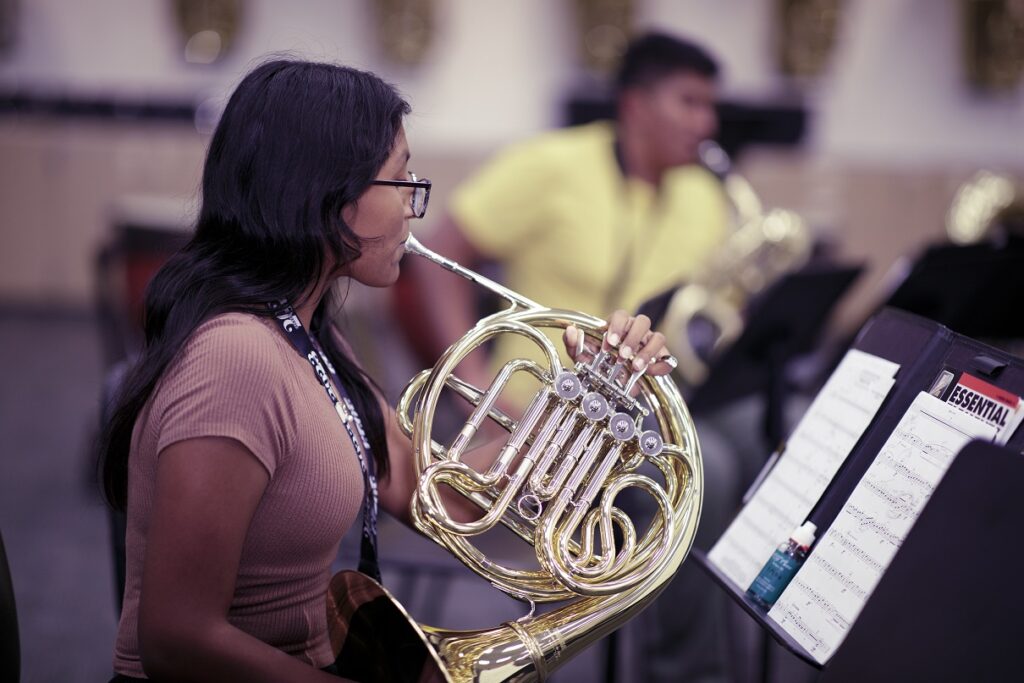Music on a Cart: Make it Work
We’ve all heard of art on a cart, but what about music on a cart? You can store and carry all you need in a cart to teach music lessons!
If you’re used to having your own classroom, hearing your administrator talk about changing to a “music on a cart” format will likely make you sigh. Putting your classroom on wheels is not ideal and it can be intimidating, but you can make it work. I have taught music in gyms, in other people’s classrooms and even in big instrument storage lockers. Here are some tips that will help you teach music anywhere.
The Cart Itself
 Choose your cart carefully because it is your classroom. Helpful features to have on a music cart include:
Choose your cart carefully because it is your classroom. Helpful features to have on a music cart include:
• Small, stackable totes
• Pocket holders
• Drawers
• Hanging hooks
• Binders with folders and other organizational tools
If you’re using a cart that the school has provided, you may need to do some DIY because you will need to get creative to make a space-saving cart. Look for different ways to attach instruments or to save space, such as hooks, Velcro, mini-totes, etc.
If you don’t have the funds to buy your own cart with drawers, buy some locking and stackable totes. One of the biggest challenges with teaching on a cart is getting everything you need to fit on it and staying organized.
Include a Sub Basket, Create a Second Cart
Classroom or no classroom, getting sick is inevitable. Having an emergency sub basket on your cart is a must-have for any time of year. Creating a second cart and having it in storage is also a good idea in case an unknowing janitor or school guest decides to relocate your portable classroom (you never know, anything can happen!).
Downsize Your Lesson Plans
Downsizing your lesson plans is frustrating. After all, you have all this musical equipment — xylophones, ukuleles and musical props galore. But what if you can teach many of the same concepts with smaller instruments?
 Hand Clapping and Cups: The smaller the instruments, the easier it’s going to be for you. However, this doesn’t mean that you can’t make great music. Prioritize small hand percussion instruments like scrapers, shakers and handbells. Don’t forget that our bodies can be instruments, too.
Hand Clapping and Cups: The smaller the instruments, the easier it’s going to be for you. However, this doesn’t mean that you can’t make great music. Prioritize small hand percussion instruments like scrapers, shakers and handbells. Don’t forget that our bodies can be instruments, too.
Hand-clapping games or cup games are perfect for days when you don’t want to bring a cart at all. Some people might think that hand-clapping sounds like child’s play, but you can find some surprisingly complex pieces for body percussion that will even keep high schoolers on their toes.
For advanced students, try this two-part minimalist classical piece called “Clapping Music” by Steve Reich. This iconic piece was first written in 1972. I performed it with one of my classes in college. Even as a music major, I was challenged by this piece.
“When I’m Gone,” which is better known as “the cup song” that Anna Kendrick performed in “Pitch Perfect” (and originally sung by The Carter Family) is another engaging lesson plan to break out. All you need are cups! I learned this song in high school when “Pitch Perfect” first came out. It’s more than just a cool party trick, especially when you sing and perform the cup routine at the same time. Just be sure to swap the line about whiskey for something like “I’m buyin’ Faygo for the way.”
For elementary students, try hand-clapping games like:
• “Ram Sam Sam”
• “Miss Mary Mack”
• “Down Down Baby”
Simple hand-clapping games and circle-clapping games are excellent ways to work on cross-body motor skills. If you’re feeling adventurous, try the “Cup Game” with elementary students. Rhythmic cup games have been around long before “Pitch Perfect” and actually used to be a competitive activity!
 Small Manipulatives and Other Helpful Items: Keep small items in your cart like scarves (for choreography), balls, hacky sacks, rubber dots, etc. that are portable, engaging and inspire movement. Other helpful things to keep on hand include mini whiteboards, golf pencils, scrap paper and blank staff paper.
Small Manipulatives and Other Helpful Items: Keep small items in your cart like scarves (for choreography), balls, hacky sacks, rubber dots, etc. that are portable, engaging and inspire movement. Other helpful things to keep on hand include mini whiteboards, golf pencils, scrap paper and blank staff paper.
Rubber dots were a lifesaver for me. If you are moving from classroom to classroom, you never know if you’ll have a circle carpet or not. For littles, having rubber dots to sit on is a great way to smooth out classroom transitions, and give K-2 students more classroom structure.
Get a Portable Projector and a Soundbar: Don’t know if you’ll be teaching in a small room without a smartboard? Mini portable projectors can help you teach anywhere. Any rhythm reading exercises you already have in your arsenal can be read on smaller instruments, like those mentioned earlier. While you can’t interact with the screen, it’s still a good way to provide a visual aid and level up your music-on-a-cart so you can continue teaching reading and solfege.
With a soundbar, you can easily fill a room without the hassle of logging into another teacher’s computer because sometimes you just don’t have enough time! I used a soundbar for subbing and musicals as well.
Classroom Management: One of the most difficult aspects of moving your classroom on a cart is classroom management. It’s difficult to create a routine when you’re always working in a different space. I use a chime to signal the start of class, and when we need to quiet down to focus. While not all rooms have enough space to move around a lot, alternating between standing and sitting activities can help keep students’ attention.
 Teacher Tip: Take Up Space — Even if you’re always teaching in someone else’s space, you must think of it as your room until the bell rings. It’s also a valid move to ask the other teacher to leave their desk so you can take over, even if it’s uncomfortable at first.
Teacher Tip: Take Up Space — Even if you’re always teaching in someone else’s space, you must think of it as your room until the bell rings. It’s also a valid move to ask the other teacher to leave their desk so you can take over, even if it’s uncomfortable at first.
Don’t Give Up Just Yet!
Even though we have focused on how to make a classroom on a cart work, please know that you don’t have to give up if you’ve been notified that you’re going to have to vacate your classroom. Resources like your union can help. This NAfME article offers great advice on how to navigate the situation. And, even if you end up teaching on a cart, having a signed acknowledgment of how this is going to impact you and your student is extremely helpful.
That’s all to say that, when admin gives you lemons, keep making music. No matter what kind of space restrictions and curveballs are thrown at you, you’ve got this!
















